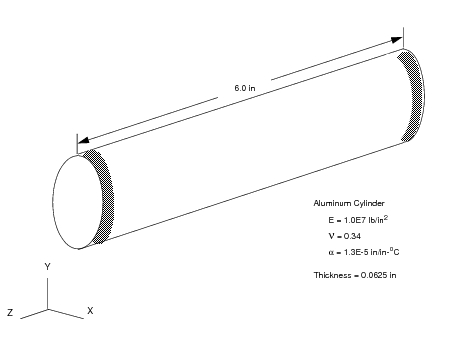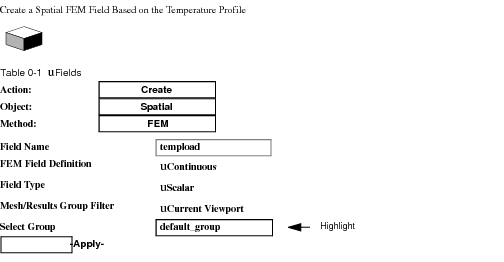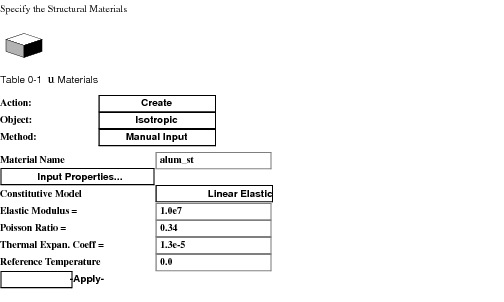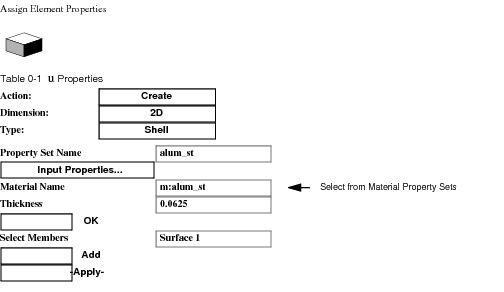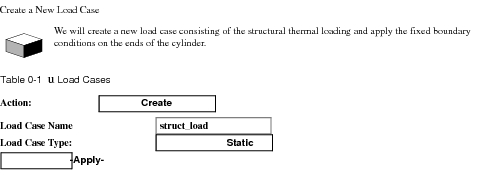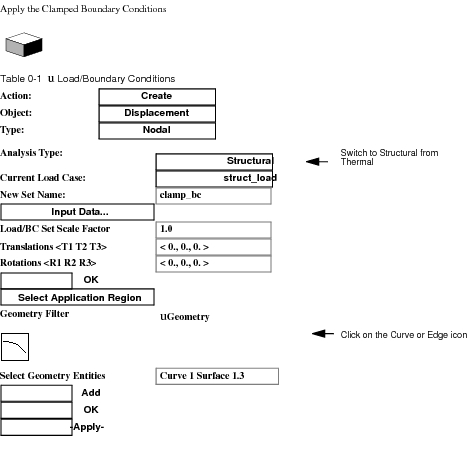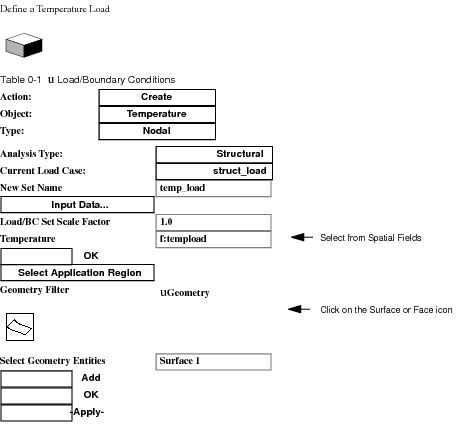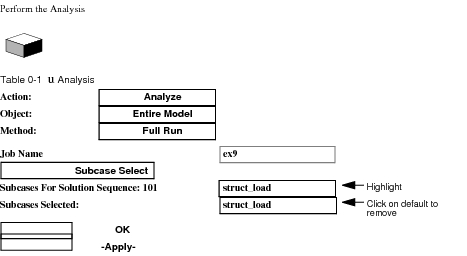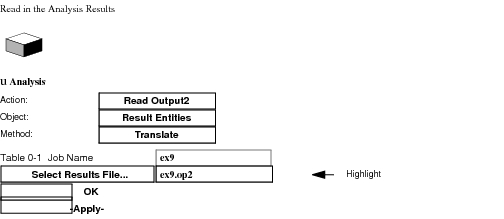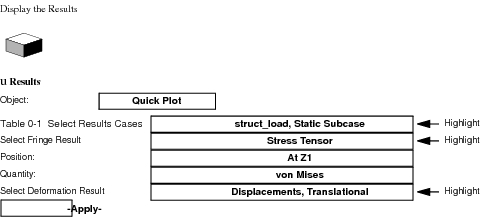XXXXXXXXXXXXXXXXXXXXXXXXXXXXXXXXXXXXXXXXXXXXXXXXXXXXXXXXXXXXXXXXXXXXXXXXXXXXXXXXXXXXXXXXXXXXXXXXXXXXXXXXXXXXXXXXXXXXXXXXXXXXXXXXXXXXXXXXXXXXXXXXXXXXXXXX''"> 7.10 Example 9 - Thermal Stress Analysis from Directional Heat Loads
Problem Description
This example demonstrates how to apply the thermal results of Example 8 to perform a stress analysis. We will create the temperature loading for the stress run by using the Create-Spatial-FEM command under the Fields Application. You can also use the include punch file option to get the thermal load.
The diameter of the cylinder is 1.5 inch with a length of 6 inches. The material is aluminum. The heat transfer problem solved in Example 8 resulted in a temperature solution which we would now like to apply to a thermal stress analysis.
Modeling
We will first apply the Create-Spatial-FEM command to define the temperature load for a thermal stress analysis. Initially, the structure is stress-free at a temperature of 0 oC. The cylinder is clamped on both ends for the thermal stress calculation.
Discussion of Results
For output we plot the von Mises stress for the fixed end cylinder undergoing the directional thermal load. Peak stresses occur near the fixed end points (recall the points are fixed in X, Y, and Z directions). Thermal expansion causes growth in the axial and radial directions with a circumferential variation due to the directional nature of the thermal load. Near the cylinder mid-plane, in an axial sense, we find the maximum stress at the location which is normal to the directional load vector. The minimum is on the opposite side of the cylinder in the shadow.
